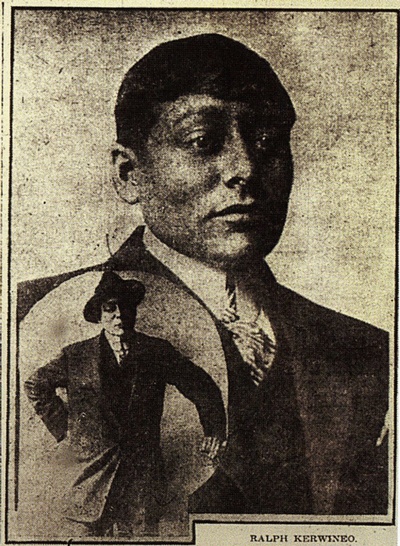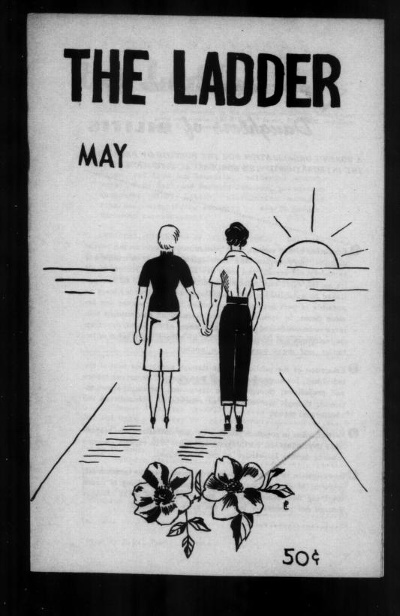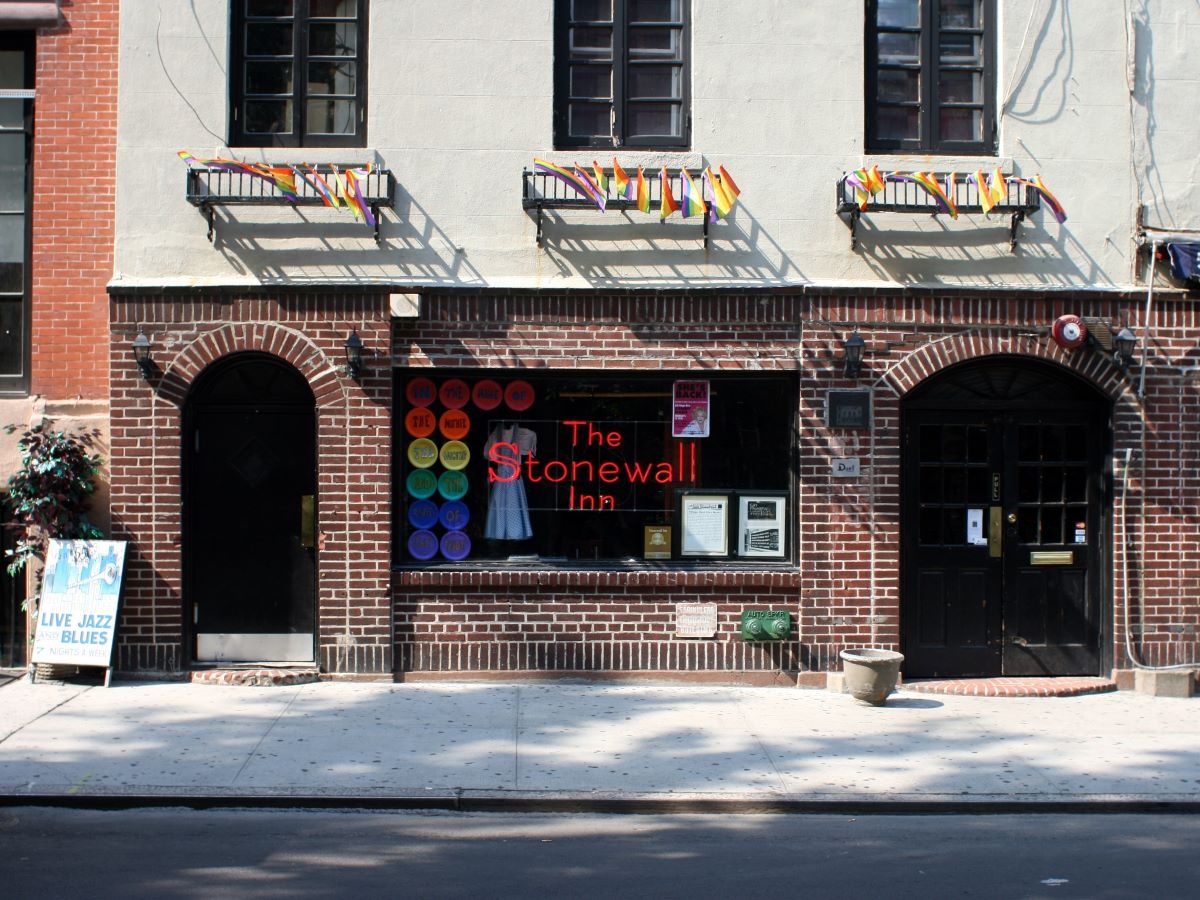In celebration of Pride Month, the Free Library’s Social Science and History Department is displaying books from the collection that give an overview of the study of queer history.
LGBTQ+ people have always existed and will continue to exist throughout human history and across the world. Queer history involves examining these lives and navigating the additional challenges of uncovering histories that are often erased, distorted, and forced underground due to persecution and oppressive power structures. Queer history can be focused on individuals and their identities. Yet, it is also frequently tied to social and cultural histories involving an interdisciplinary analysis of race, class, gender, and other critical topics. Queer history is a dynamic field that adds richness to our collective understanding of the past and present.

Books like Hidden from History: Reclaiming the Gay and Lesbian Past (1989) contributed to illuminating queer lives of the past like Ralph Kerwineo, a Black and Potawatomi-Cherokee person born as Cora Anderson in 1876.
The display highlights early contributions to the study of queer history such as John Addington Symonds’ examination of homosexuality in Ancient Greece in A Problem in Modern Ethics (1891) and early homosexual movement activist Dr. Magnus Hirschfeld’s The Sexual History of the World War (1930). In the late 19th and early 20th Centuries when these works were published, authors of queer history at times published privately to avoid public attention and censorship. In the case of Hirschfeld, a gay Jewish man who founded the pioneering Institute for Sexual Science in Berlin, many of his works were targeted by the Nazi regime and destroyed in book burnings before his forced exile in 1933.
In the aftermath of World War II, homosexual rights groups began to rebuild and become more publicly visible. These newly formed organizations commonly used the term “homophile,” emphasizing ‘love’ through the Greek root ‘phil.’ Amid moral panics in postwar America, these groups exhibited courage through their publicity: publishing their own magazines, educating members on queer history, and organizing protests during the Red Scare against left-wing ideologies and the parallel Lavender Scare against queer people. The display features publications from homophile organizations of the 1950s and 1960s like The Mattachine Society and the Daughters of Bilitis.

The Ladder was published by the Daughters of Bilitis, the first lesbian rights organization in the United States, from 1956 to 1972.
The second part of the display highlights a shift in how queer history is told. In the aftermath of the Stonewall Uprising, queer activists created their own historical records, taking pride in living authentically and claiming agency over their stories. The Stonewall Uprising began on June 28, 1969, after police raided a gay bar in New York City and LGBTQ+ resisted and fought back. While the resistance exhibited at The Stonewall Inn was not new, especially for the people of color and gender non-conforming people who were at the forefront of that resistance, it was a radicalizing moment that steered more queer activists towards a vision of liberation rooted in direct action. Arising alongside the New Left, many people associated with the gay liberation movement aligned themselves with other interconnected struggles: anti-racism, anti-capitalism, anti-imperialism, feminism, and a general rejection of traditional gender roles and societal expectations. The display reflects queer history as told by its creators with memoirs by Gay Liberation Front members, work by Philadelphia lesbian activist Anita Cornwell, and local queer media voices from publications like Tell-a-Woman and Philadelphia Gay News.
The materials described here and more are housed in the two display cases on either side of the Social Science and History Department entrance, on the Second Floor of Parkway Central Library. The display will be on view through the end of July 2024.
Today’s writers of queer history continue to imagine new ways of looking at the world to better understand the past and its impact on our present. Here are some newer queer history titles to explore this Pride Month and beyond:
We Are Everywhere (2019) by Matthew Riemer
Through the lenses of protest, power, and pride, We Are Everywhere is an essential and empowering introduction to the history of the fight for queer liberation. Combining exhaustively researched narrative with meticulously curated photographs, the book traces queer activism from its roots in late-19th-century Europe — long before the pivotal Stonewall Riots of 1969 — to the gender warriors leading the charge today. Featuring more than 300 images from more than seventy photographers and 20 archives, this inclusive and intersectional book enables us to truly see queer history unlike anything before, with glimpses of activism in the decades preceding and following Stonewall, family life, marches, protests, celebrations, mourning, and Pride. By challenging many of the assumptions that dominate mainstream LGBTQ+ history, We Are Everywhere shows readers how they can — and must — honor the queer past in order to shape our liberated future.
Reclaiming Two-Spirits: Sexuality, Spiritual Renewal, and Sovereignty in Native America (2022) by Gregory D. Smithers
This sweeping history of Indigenous traditions of gender and sexuality decolonizes North America's past and reveals how Two-Spirit people are reclaiming their place in Native nations.
Black on Both Sides: A Racial History of Trans Identity (2017) by C. Riley Snorton
Many know the story of Christine Jorgensen, America's first prominent transgender woman. Her celebrity, however, has obscured other mid-century trans narratives — ones lived by African Americans such as Lucy Hicks Anderson and James McHarris. Their erasure from trans history masks the profound ways race has figured prominently in the construction and representation of transgender subjects. C. Riley Snorton identifies multiple intersections between Blackness and transness from the mid-19th century to present-day anti-Black and anti-trans legislation and violence. Drawing on a deep and varied archive of materials — early sexological texts, fugitive slave narratives, Afro-modernist literature, sensationalist journalism, and Hollywood films — Snorton attends to how slavery and the production of racialized gender provided the foundations for an understanding of gender as mutable. In tracing the twinned genealogies of Blackness and transness, Snorton follows multiple trajectories, from the medical experiments conducted on enslaved Black women by J. Marion Sims, the father of American gynecology, to the negation of Blackness that makes transnormativity possible. Revealing instances of personal sovereignty among Blacks living in the antebellum North that were mapped in terms of cross-dressing and canonical Black literary works that express Black men's access to the female within, he concludes with a reading of the fate of Phillip DeVine, who was murdered alongside Brandon Teena in 1993, a fact omitted from the film Boys Don't Cry out of narrative convenience.
Let the Record Show: A Political History of ACT UP New York 1987-1993 (2021) by Sarah Schulman
Based on more than two hundred interviews with ACT UP members and rich with lessons for today's activists, Let the Record Show is a revelatory exploration — and long-overdue reassessment — of the coalition's inner workings, conflicts, achievements, and ultimate fracture. Schulman, one of the most revered queer writers and thinkers of her generation, explores the how and the why, examining, with her characteristic rigor and bite, how a group of desperate outcasts changed America forever, and in the process created a livable future for generations of people across the world.
We Have Always Been Here: A Queer Muslim Memoir (2019)
A queer Muslim searches for the language to express her truest self, making peace with her sexuality, her family, and Islam. Growing up in Pakistan, Samra Habib lacks a blueprint for the life she wants. She has a mother who gave up everything to be a pious, dutiful wife and an overprotective father who seems to conspire against a life of any adventure. Plus, she has to hide the fact that she's Ahmadi to avoid persecution from religious extremists. As the threats against her family increase, they seek refuge in Canada, where new financial and cultural obstacles await them. When Samra discovers that her mother has arranged her marriage, she must again hide a part of herself — the fun-loving, feminist teenager that has begun to bloom — until she simply can't any longer. So begins a journey of self-discovery that takes her to Tokyo, where she comes to terms with her sexuality, and to a queer-friendly mosque in Toronto, where she returns to her faith in the same neighborhood where she attended her first drag show. Along the way, she learns that the facets of her identity aren't as incompatible as she was led to believe and that her people had always been there — the world just wasn't ready for them yet.
The Women's House of Detention: A Queer History of a Forgotten Prison (2022) by Hugh Ryan
The Women's House of Detention, Greenwich Village's most forbidding and forgotten queer landmark, stood from 1929 to 1974, imprisoning tens of thousands from all over New York City. The little-known stories of the queer women and trans-masculine people incarcerated in this building present a uniquely queer argument for prison abolition. The "House of D" acted as a nexus, drawing queer women down to Greenwich Village from every corner of the city. Some of these women — Angela Davis, Grace Paley, Andrea Dworkin, and Afeni Shakur — were famous, but the majority were working-class people, incarcerated for the "crimes" of being poor and improperly feminine. Today, approximately 40 percent of people in women's prisons identify as queer; in earlier decades, the percentage was almost certainly higher. Historian Hugh Ryan explores the roots of this crisis of queer and trans incarceration, connecting misogyny, racism, state-sanctioned sexual violence, colonialism, sex work, and the failures of prison reform. At the same time, The Women's House of Detention highlights how queer relation and autonomy emerged in the direst of circumstances: from the lesbian relationships and communities forged through the House of D, to a Black socialist's fight for a college education during the Great Depression, to the forgotten women who rioted inside the prison on the first night of the Stonewall Uprising nearby. This is the story of one building and so much more: the people it caged, the neighborhood it changed, and the resistance it inspired.
Q&A: Voices from Queer Asian North America (2021)
This book offers a vibrant array of contemporary Asian North American LGBT scholarship and cultural productions from essays, poetry, visual art, and memoirs of activists and scholars.
Love's Next Meeting: The Forgotten History of Homosexuality and the Left in American Culture (2021) by Aaron Lecklider
Well before Stonewall, a broad cross-section of sexual dissidents took advantage of their space on the margins of American society to throw themselves into leftist campaigns. Sensitive already to sexual marginalization, they also saw how class inequality was exacerbated by the Great Depression, witnessing the terrible bread lines and bread riots of the era. They participated in radical labor campaigns, sympathized like many with the early, prewar Soviet Union, contributed to the Republicans in the Spanish Civil War, opposed US police and state harassment, fought racial discrimination, and aligned themselves with the dispossessed. Whether they were themselves straight, gay, or otherwise queer, they brought sexual dissidence and radicalism into conversation at the height of the Left's influence on American culture. Combining rich archival research with inventive analysis of art and literature, Love's Next Meeting explores the relationship between homosexuality and the Left in American culture between 1920 and 1960. Author Aaron S. Lecklider uncovers a lively cast of individuals and dynamic expressive works revealing remarkably progressive engagement with homosexuality among radicals, workers, and the poor. Leftists connected sexual dissidence with radical gender politics, antiracism, and challenges to censorship and obscenity laws through the 1920s and 1930s. In the process, a wide array of activists, organizers, artists, and writers laid the foundation for building a radical movement through which homosexual lives and experiences were given shape and new political identities were forged. Love's Next Meeting cuts to the heart of some of the biggest questions in American history: questions about socialism, sexuality, and the supposed clash still making the headlines today between leftist politics and identity politics. What emerges is a dramatic, sexually vibrant story of the shared struggles for liberation across the 20th century.
Stand By Me: The Forgotten History of Gay Liberation (2016) by Jim Downs
Despite the tremendous gains of the LGBT movement in recent years, the history of gay life in this country remains poorly understood. According to conventional wisdom, gay liberation started with the Stonewall Riots in Greenwich Village in 1969. The 1970s represented a moment of triumph — both political and sexual — before the AIDS crisis in the subsequent decade, which, in the view of many, exposed the problems inherent in the so-called "gay lifestyle". In Stand by Me, the acclaimed historian Jim Downs rewrites the history of gay life in the 1970s, arguing that the decade was about much more than sex and marching in the streets. Drawing on a vast trove of untapped records at LGBT community centers in Los Angeles, New York, and Philadelphia, Downs tells moving, revelatory stories of gay people who stood together — as friends, fellow believers, and colleagues — to create a sense of community among people who felt alienated from mainstream American life.
Bad Gays: A Homosexual History (2022) by Huw Lemmey
Part revisionist history, part historical biography, Bad Gays is based on the hugely popular podcast series. The book subverts the notion of gay icons and queer heroes and asks what we can learn about LGBTQ history, sexuality, and identity through its villains and baddies.
Have a question for Free Library staff? Please submit it to our Ask a Librarian page and receive a response within two business days.











